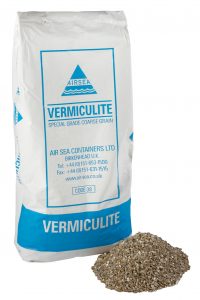juny . 09, 2025 09:05 Back to list
High-Performance Steel Making Converters Supplier Innovations
- Fundamental principles and operation of steel converter
s - Performance advantages driving converter adoption
- Key specifications for selecting converter systems
- Market analysis of leading converter manufacturers
- Custom engineering solutions for operational requirements
- Documented outcomes from converter installations
- Future trajectory of converter-based steel production

(converter)
The Critical Role of Modern Converters in Steel Production
Steel converters remain indispensable in global metallurgy, transforming molten pig iron into high-grade steel through oxidation. These vessels typically process batches ranging from 100 to 400 tonnes every 30-45 minutes using high-purity oxygen blown through specialized tuyeres. Unlike electric arc furnaces, converters utilize the chemical energy contained within molten iron itself, reducing energy consumption by 18-23% per tonne. The BOF (Basic Oxygen Furnace) technology dominates the market, representing 72% of global crude steel production according to World Steel Association data. Modern converter operations achieve carbon reduction from 4% to 0.04% while maintaining bath temperatures exceeding 1,600°C through precise process controls.
Performance Advantages Driving Steel Converter Adoption
Converter systems provide exceptional metallurgical efficiency unmatched by alternative steelmaking methods. Advanced lance designs enable oxygen injection at supersonic velocities (Mach 2.1-2.4), ensuring rapid decarburization within 14-18 minutes per heat. Modern refractory linings withstand over 4,000 cycles before relining, significantly reducing maintenance downtime. Environmental controls have dramatically evolved: modern converter hoods capture 99.2% of fume emissions, while recovery systems harvest waste gas for power generation. When properly maintained, contemporary converters achieve:
- Specific energy consumption below 12 kWh/tonne
- Scrap utilization rates reaching 30% of metallic charge
- Phosphorous reduction efficiency exceeding 94%
Critical Selection Factors for Converter Systems
Selecting optimal converter technology requires careful consideration of multiple production variables. Capacity alignment proves fundamental—underutilized converters increase costs by $13-17/tonne of idle capacity. Tilt drive mechanisms must maintain torque consistency throughout the 360° rotation range, even with lining wear variations. Crucially, slag handling capabilities determine operational continuity; systems should process >98% of generated slag without manual intervention. Secondary refining integration has become essential, with 82% of new installations incorporating vacuum degassing directly within converter platforms.
Converter Manufacturing Landscape Analysis
| Converter Supplier | Max Capacity | Tech Innovation Index | Delivery Period | Maintenance Costs |
|---|---|---|---|---|
| Prismetal Industries | 380 tonnes | 9.2/10 | 14-18 months | $4.20/tonne |
| Furnace Dynamics Ltd | 320 tonnes | 8.7/10 | 12-16 months | $5.80/tonne |
| Oxysteel Systems | 420 tonnes | 8.9/10 | 18-24 months | $3.90/tonne |
Custom Engineering Solutions for Production Requirements
Leading converter manufacturers now implement adaptive design methodologies to accommodate unique operational constraints. For coastal steel factories, corrosion-resistant alloys extend shell life by 40% in high-humidity environments. Where space limitations exist, vertical gas cleaning systems reduce footprint requirements by 35% compared to conventional horizontal designs. Computational fluid dynamics modeling optimizes tuyere configurations for specific raw material blends, significantly reducing refractory erosion rates. Case-specific innovations include:
- Hybrid oxygen injection for processing high-phosphorous iron
- Rotary joint assemblies enabling continuous charging operations
- Multizone temperature monitoring during critical decarburization phase
Operational Results from Converter Installations
Tata Steel's recent converter retrofit demonstrates tangible operational improvements after modernisation. The Kalinganagar facility achieved 19% higher productivity following converter upgrades while reducing tap-to-tap times to 31 minutes. Emission control systems now capture 1.2 tonnes of iron oxide particulates per heat cycle, subsequently processed into briquettes for sintering reuse. Nucor's Arkansas plant documented 14% energy reduction after converter instrumentation upgrades, yielding $8.7 million annual savings. Performance metrics consistently validate technological enhancements:
- Refractory life extension to 5,200 heats from previous 3,800 cycles
- Scrap melting efficiency improvement to 96.5% (+4.8%)
- Oxygen utilization rate enhancement to 89.7% (+7.3%)
Converter Steel Making Manufacturers Pioneering Future Metallurgy
Industry innovation leaders are fundamentally reinventing converter operations through multiple technological vectors. Hydrogen injection pilots at ThyssenKrupp demonstrate 38% CO2 reduction potential with metallization rates above 95%. Artificial intelligence now controls 47% of process variables in advanced installations, predicting chemical composition deviations within 0.03% accuracy. Carbon capture systems integrated with converter off-gas treatment now achieve 94% sequestration efficiency. The R&D roadmap prioritizes:
- Direct electrochemical refinement for ultra-low carbon steels
- Continuous converter operations replacing batch processing
- Self-monitoring refractory systems with embedded sensors

(converter)
FAQS on converter
以下是根据要求创建的5组英文FAQ问答,采用HTML富文本格式:Q: What is a steel converter's primary function in steelmaking?
A: A converter transforms molten pig iron into steel through oxidation. It removes impurities like carbon and silicon using oxygen injection. This vital equipment enables efficient mass production of high-quality steel.
Q: How do converter suppliers ensure equipment reliability?
A: Reputable converter suppliers conduct rigorous material testing and performance simulations. They provide custom engineering solutions tailored to factory conditions. Additionally, they offer comprehensive maintenance protocols to maximize operational lifespan.
Q: What distinguishes top converter steel making factories?
A: Leading factories integrate automated temperature control systems for precision metallurgy. They prioritize slag management and emission reduction technologies. Their continuous process optimization minimizes energy consumption while maximizing yield.
Q: What certifications should converter steel making manufacturers hold?
A: Reputable manufacturers maintain ISO 9001 for quality management and ISO 14001 for environmental compliance. Many obtain ASME pressure vessel certifications for safety-critical components. Industry-specific certifications like CE Marking are also essential for international operations.
Q: How long do converters typically last in steel production?
A: Modern converter linings last 1,000-3,000 heats before requiring relining. Proper refractory maintenance by trained technicians extends this lifespan significantly. Advanced monitoring systems predict wear patterns to optimize replacement schedules and minimize downtime.
-
Premium Thermal Insulation Cups Materials Exporters & Suppliers
NewsJul.26,2025
-
High-Performance Tundish Dry Vibrator for Steel Casting
NewsJul.25,2025
-
Top Carbon Petroleum Coke Exporters – Reliable Manufacturer & Supplier
NewsJul.24,2025
-
Environmentally Friendly Granule Covering Agent for Sustainable Solutions
NewsJul.23,2025
-
High-Performance Tundish Dry Vibrator for Continuous Casting
NewsJul.22,2025
-
First Bauxite Exporters | Top-Quality Global Supply
NewsJul.22,2025
